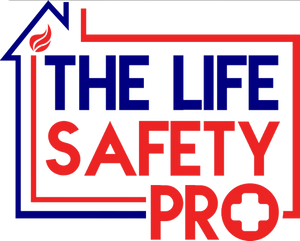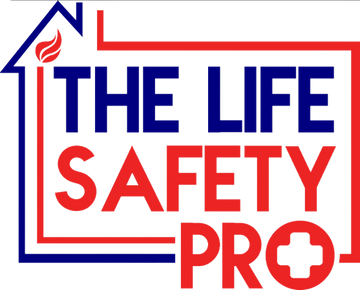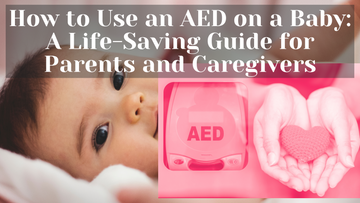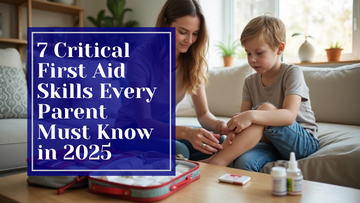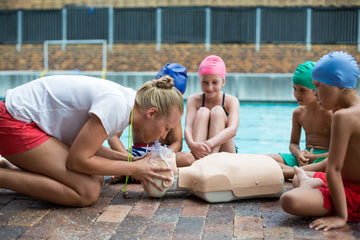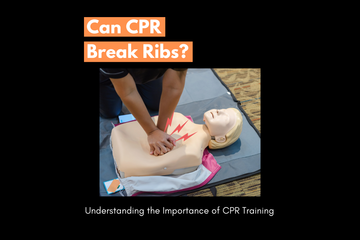
Can CPR Break Ribs? Understanding the Importance of CPR Training

Did you know that during a lifesaving procedure like CPR, breaking ribs can be an unfortunate but necessary consequence?
This startling fact might seem alarming, but knowing this can help prepare you for CPR situations and empower you to save lives.
Studies show that 30% to 80% of adults who receive CPR get rib fractures(1)(2).

But do you need to break ribs to do CPR effectively? Stick around and find out below.
CPR, or cardiopulmonary resuscitation, is a very important skill everyone should know. In this post, we will learn what happens during chest compressions, why sometimes ribs can break, and why it's good for parents and caregivers to know these facts. Are you ready to learn more about CPR? Let's get started!
Understanding CPR and Its Purpose

CPR is an important skill used to save lives when the heart stops beating. It is a vital skill that can maintain circulation and oxygen flow to the brain and other organs until medical help arrives. The key components of CPR include chest compressions, rescue breaths, and, when available, the use of an Automated External Defibrillator (AED).
The Mechanics of CPR Chest Compressions
When you do CPR, you push hard on the chest to help move blood around the body. The American Heart Association says to push 100 to 120 times every minute. These pushes help move blood from the heart to important parts of the body, like the brain. It is very important to do it right and push with the right speed and force. You can even listen to the American Heart Association's Spotify playlist, "Don't Drop The Beat," to help keep the right beat.
Depth of Chest Compressions
When doing chest compressions, you must push down deep enough. For adults, you need to push at least 2 inches deep.
This makes sure there is enough pressure on the heart to move the blood.
For children from age 1 until they become teenagers, push about 2 inches deep. Here is my Child CPR Hand Placement Post
For babies under one year old, push about 1.5 inches or about one-third of the chest depth.
This helps the blood move well, even though it can put a lot of pressure on the body, especially on the ribs.

Can CPR Break Ribs?
Many people ask, "Can CPR break ribs?" The answer is yes. When you push hard on the chest during CPR, the ribs might break, especially if the person is older or has weak bones.
Studies show that pushing too deep or too hard can break more ribs. Even though this sounds scary, saving a life is more important than worrying about broken ribs.

Some people say you must break ribs to do CPR correctly, but that is NOT true.
When I have performed CPR, I've heard cracking or popping sounds. This happens because the cartilage and joints in the chest are moving.
After a little while, the sounds stop, and the chest feels soft. If you hear these noises, it is typical for CPR, and you should not be alarmed.
Factors Influencing Rib Fractures
Some things make it more likely for ribs to break during CPR:
- Age and Bone Density: Older people have bones that are not as strong.
- Technique: Pushing too hard or too fast can break ribs.
- Body Composition: Heavier People might need more force, which can cause injuries.
Importance of Knowledge and Training
It is very important to know how to do CPR. Learning CPR helps you act fast in an emergency.
Even though there is a small chance of injury, saving a life is the most important goal.
Studies show that people trained in CPR feel more confident and act quickly when they need help.
Does your child play sports ? Make sure you read my article on Commotio Cordis and what you need to know.
CPR Training for Parents and Caregivers
For parents and caregivers, learning CPR can make a big difference. In CPR classes, you usually learn three main things:
- Recognizing Emergencies: You learn how to tell when someone needs CPR, like if they are not awake, breathing or moving.
- Proper Techniques: You learn how deep and fast to push on the chest and when to give rescue breaths.
- Understanding the Risks: You learn there is a chance of breaking ribs, but this risk is small compared to saving a life.
Overcoming the Fear of Injury
It can be scary to think about hurting someone when you do CPR. But remember, a small injury is okay if it helps save a life.
Within a few months, their injuries will heal.
Focus on keeping the person breathing and their heart pumping, and do not worry too much about the risk of broken ribs.
Being Prepared with Personal First Aid Kits
In addition to CPR training, having a well-stocked first aid kit is essential for parents and caregivers.
A suitable first-aid kit should include:
* CPR face shield or mask
* Adhesive bandages in various sizes
* Sterile gauze pads
* Antiseptic wipes or ointments
* Instant cold packs
* Easy to use First aid Guide
* High-quality materials that will not break when used.
While CPR is vital, a comprehensive first aid kit can help you address a wide range of emergencies.
Practice Makes Perfect
Regular practice is vital to ensuring your skills stay sharp. Consider signing up for a local CPR training class. HSI ,American Heart Association or participating in workshops to improve your skills. At any training, make sure you practice compressions on a CPR manikin to ensure you can perform adequately when needed and build that muscle memory.
Conclusion: Get Ready for Anything
We live in a world where things can happen suddenly. Being ready is the best way to keep safe. CPR might sometimes break ribs, but saving a life is much more important than a few broken bones. Learning CPR not only helps you save lives but also helps you handle any problems that come up.
So, what can you do? Learn the skills you need to act quickly in an emergency. Start by taking a CPR class and ensuring your family has a good first aid kit, like our Children's First Aid Kit on Amazon.
Remember, every second counts, and with the right preparation, you can be a hero when it matters most.
